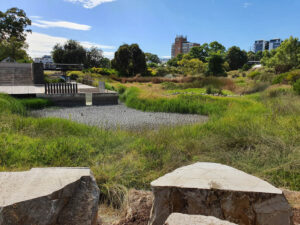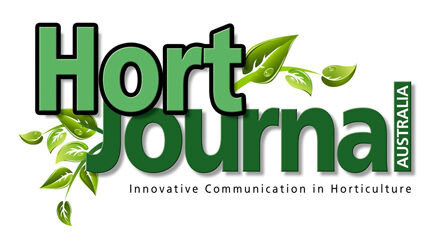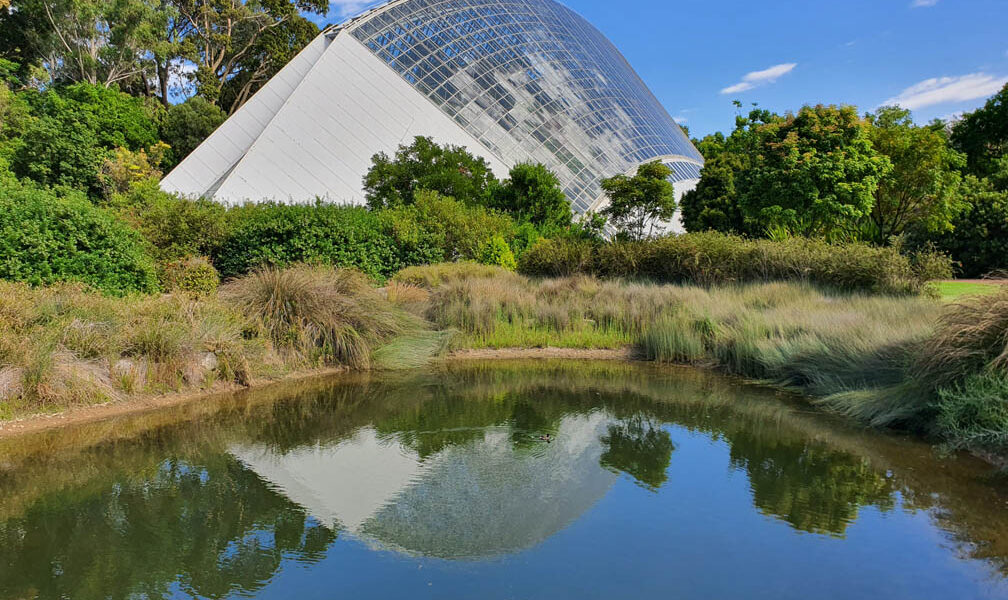Reflecting on the Adelaide Botanic Garden Wetlands
By Dr Leonie J. Scriven
Water is a precious resource and vital to any successful horticultural venture. The Adelaide Botanic Garden had the vision and opportunity to diversify its potential water sources used to irrigate its living collection. Through the creation and development of a managed aquifer storage and recovery system, the botanic gardens can now use groundwater to irrigate the botanic gardens and has, in addition, created a wetland habitat used for teaching and horticultural training. This journey has however, not been without its challenges and abundant learnings.
The noise of water rushing under the wetland bridge at the Adelaide Botanic Garden is the sound of stormwater irrigation success. Many years in the making, the journey to a secure and sustainable water resource future began in 2003 with the first of many feasibility studies.

The First Creek Wetland and Aquifer Storage and Recovery facility aimed to completely replace the use of potable water with stormwater for botanic garden irrigation. The scheme diverts stormwater from First Creek and treats it through a constructed wetland and a mechanical filter system. Water is then stored in, and subsequently recovered from, underlying fractured rock aquifers. It was anticipated that the system would take eight years to recharge the underlying aquifer with sufficient fresh water to support annual water volumes needed to replace the use of potable water for irrigation purposes.

The stormwater recycling system is designed to achieve a minimum of annual aquifer recharge of 135ML and minimum recovery of 100ML, resulting in 200ML aquifer recharge and 140ML recovery, depending on rainfall. Twenty percent of the recharge water is to be left in the aquifer for environmental benefit. Over the last fifteen years the Botanic Garden has averaged potable water use of between 80ML and 130ML depending on the seasonal conditions. This summer is the first summer that it will utilise the stored stormwater harvest for site irrigation.
The conceptual design process for the overall project lead to a fusion of engineering, landscape architecture, horticulture and interpretation, resulting in an integrated system combining physical, biological, mechanical and hydrological processes. Two major built structures were included and all infrastructure elements were carefully located to minimise visual impact, whilst maintaining serviceability.

As any experienced project manager will tell you however, expect the unexpected. It has taken over ten years to resolve structural and system challenges. Allowing more time for testing of the system before handover would have been of great benefit to identify and fix many performance issues early on. The desire for the system to run totally automatically on a daily basis actually resulted in more equipment being installed than necessary, and more servicing required than anticipated.
The first few winters identified many issues with the injection pumps and sensors in the bores. The design and placement of the Gross Pollutant Trap (GPT), and the Continuous Deflection Separation (CDS), also created challenges to overcome. Building into future budgets and management plans, the ongoing maintenance and replacement of both the physical assets and green assets is vital for long-term success.
Planting programs, commenced in spring 2012, attempted to emulate a very complex wetland landscape. Many collection species substitutes had to be made, and fewer plants used than what was requested. Some species proved to be not suitable and many failed and have since been replaced. Horticulturally, we have had to adapt. Everything planted as “dwarf form” or “compact form” was anything but. They all grew significantly larger than anticipated, creating crowded plantings, in turn limiting physical access to get amongst them to deal with weeds.
Goodenia varia was the only plant really successful at suppressing weeds. Inability to use herbicide and dense plant spacing required extensive hand weeding, which is beyond the team’s resources to achieve in heavy-weed-load seasons. In terms of weediness, Pelargonium australe turned out to be quite weedy, a vigorous self-seeder and not recommended. Using fewer plants that are spaced appropriately, allowing for mulching and weeding, will assist ongoing maintenance of the display.

Some of the most successful and impressive species include: Doryanthes palmeri, Acacia stenophylla, Callitris verrucosa, Geijera parviflora, Acacia redolens, Acacia glaucoptera, Melaleuca gibbosa, Melaleuca ‘Green Globe’, Templetonia retusa, Goodenia amplexans, Scaevola aemula, Crinum pedunculatum, Cassia brewsteri, Grevillea banksia ‘Pink Candelabra’, and Auranticarpa rhombifolia.
Today, numerous fauna and invertebrate species use the wetlands for habitat, including over a dozen species of water birds which nest and/or visit the macrophyte pond. Over the next five years about 60% of the plantings will be replaced. The botanic gardens will endeavour to rewild the wetland, using locally provenanced indigenous plants that have Kaurna relevance. The plants will be spaced appropriately, and selected to be resilient in the anticipated warmer and drier climate, where water will be even more valuable.
Dr Leonie J. Scriven
Deputy Director Living Collections
Botanic Gardens and State Herbarium
leonie.scriven@sa.gov.au
Main photo: ABG wetland holding pond 2023 (All images supplied by Botanic Gardens and State Herbarium)

